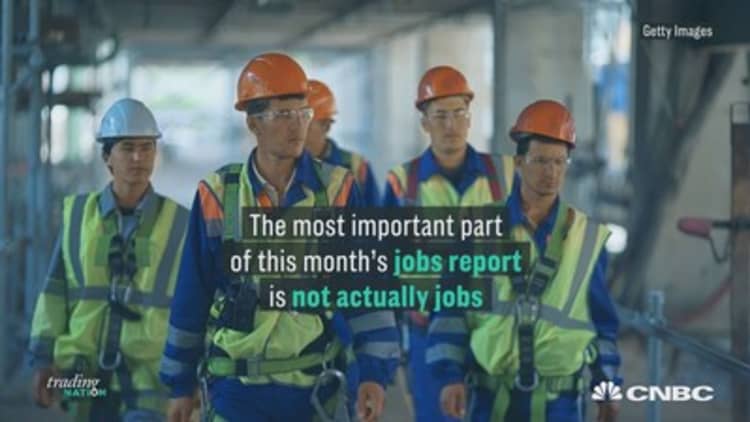
The Bureau of Labor Statistics is set to release its monthly employment report on Friday morning, and some strategists and economists are looking beyond the unemployment and monthly job gains numbers.
Wages will take center stage in Friday's report, as the market is looking to see if the U.S. consumer can pick up slack into the second half of the year, said Boris Schlossberg, managing director of foreign exchange strategy at BK Asset Management.
Hourly wages in recent monthly reports have not picked up as impressively as other areas of the economy.
Should wages beat economists' expectations, the U.S. dollar and consumer stocks would likely benefit, as that would suggest the consumer is going to have enough discretionary income to "really begin spending," Schlossberg said.
"Wages are much more important to the market right now than jobs, because we're essentially at full employment. The market now is looking for this economy to grow its income, rather than to grow jobs," he said Thursday on CNBC's "Trading Nation."
Furthermore, a wage-growth figure that surpasses the consensus view and contributes to a healthy economic backdrop would confirm to the market that the Federal Reserve is increasingly likely to raise its federal funds target rate, Schlossberg pointed out.
Hourly earnings are expected to rise by 2.6 percent year over year; the unemployment rate is expected to remain unchanged at 4.3 percent year over year, according to economists' estimates compiled by FactSet.
The prior report showed a decline in unemployment. However, nonfarm payrolls and wage growth both missed economists' expectations, with the latter coming in at 2.5 percent. That brought the average hourly wage up to $26.22.
Torsten Slok, chief international economist at Deutsche Bank, anticipates wages will rise 2.6 percent year over year, which would mark an acceleration month over month from 2.5 percent.
"Anything higher than 2.6% tomorrow will have a big impact on the rates market because it will confirm the Fed view that they need to continue to raise rates," he wrote Thursday in an email to CNBC.
Erin Gibbs, S&P Global portfolio manager, said hourly wage growth in the prior report was a "real concern." In a recent "Trading Nation" interview, Gibbs said she expected the unemployment rate to remain relatively stable, around 4.3 percent.
"What I'm really looking for is the wage growth. That's where we want to see some inflation and some healthy growth within the U.S. consumer," she said.
Subsequently, higher wage growth may translate to growth within the consumer discretionary sector and across the retail landscape that's recently faced headwinds, Gibbs added.





